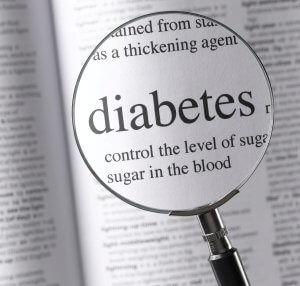
This picture has now been further complicated by the declaration at the April 2025 meeting of the Global Diabetes Institute. The International Diabetes Federation (IDF) has established a Type 5 diabetes working group in recognition of a health problem that is so devastating that it affects more than 25 million people worldwide. Type 5 diabetes is a form of the disease that typically appears in undernourished people, often in areas where children didn’t receive sufficient nutrition during their formative years. Their pancreas didn’t develop properly, so now it doesn’t make much insulin at all. If someone has these signs but doesn’t seem to fit the usual picture, like a young adult who’s slim, eats well, and has no family history of diabetes, it might be something different. Type 5 diabetes helps explain those puzzling cases and gives doctors another way to understand what’s going on.
Type 1 diabetes occurs because the body destroys insulin-producing cells through an autoimmune process. Type 2 diabetes occurs when the body fails to properly utilize the insulin it produces. Type 5 diabetes is a form of severe insulin-deficient diabetes (SIDD), which means that patients show signs of both low insulin levels and inadequate use of the little insulin that they are able to produce. It was discovered that the main cause of type 5 diabetes (also called malnutrition-related diabetes) is chronic undernutrition during childhood or adolescent years. Type 5 diabetes develops when young people are not getting enough good nutrition during their growth years, and their pancreas doesn’t develop properly.
Doctors have been aware of type 5 diabetes before, but it was not until now that it was recognized as a distinct type of diabetes mellitus on the basis that it developed because of insulin resistance. Recent studies confirmed the unique metabolic characteristics of this condition because people with type 5 diabetes suffer from insufficient insulin levels but their bodies do not show insulin resistance. In some respects, type 5 diabetes resembles maturity onset diabetes of the young (MODY) in young adults, and many patients with this condition can successfully control their blood sugars with oral medications like Januvia (prescribed off-label for type 1 or type 5 diabetes) or Onglyza with Metformin instead of requiring insulin injections.
It’s important when living with diabetes to stay in tune with your body and report anything unusual to your doctor, no matter how trivial. Symptoms can start off slowly and these same symptoms could be signs of other problems or diseases, or could be nothing at all. Early detection and proper diabetes care are better, especially with something like a chronic disease, which can have long-term health effects if not treated with the right medication. The longer you go without treatments for diabetes, the more you are at risk for kidney disease, heart disease, blindness, and other issues.
Here are 5 common symptoms of diabetes to look out for.
What are the five main symptoms of diabetes?
Frequent urination or infections
Your body is less efficient in breaking food down into sugar when you have diabetes. This results in more sugar in your bloodstream, which in turn means that your body needs to get rid of it by flushing it out in your urine. You will also be thirstier since you’re peeing so much and of course this too creates more urine.
This would explain why people suffering from diabetes go to the bathroom a lot more than anyone else. The average is between 4 to 7 times in 24 hours. If you’re going a lot more than this, then it’s worth a trip to the doctor’s office.
Additionally, higher levels of sugar mean that your body is a breeding ground for bacteria and yeast which can lead to recurrent infections – both urinary tract infections and yeast infections in general. If you notice you are getting infection after infection, this could be another warning sign for diabetes.
Hunger
Being hungrier than normal is another common symptom of diabetes since the body isn’t making enough insulin and so cells aren’t receiving the glucose they need for energy. To try to make up for the lack of energy, your body tells you that you are hungry again in an attempt to gain more glucose.
Feeling tired all the time
A natural result of your cells not getting enough glucose is low energy and fatigue. The food you eat isn’t being broken down and used by cells as it should be. Since your body isn’t getting the fuel it needs, you’ll feel more fatigued than usual.
Losing weight
While being overweight is a risk factor for diabetes, having the disease can actually cause you to lose weight. Considering the increased urination and the fact that the body isn’t absorbing food properly, it isn’t surprising that weight loss happens. Once diabetes is under control, it’s normal to start gaining a bit of weight again – and this is actually a good thing because it means that your body is finally processing your food properly.
Blurred vision
This is not blindness. Rather, in the early stages of diabetes, glucose builds up in the eye and so the eye lens doesn’t focus well. A few weeks after diabetes is under control, the problem will resolve and your eyesight will return to normal.
If you suspect you have any of these symptoms, they could be warning signs for diabetes or even something else. It’s important to go to the doctor to get checked and treated, and this is especially true if you have a family history of diabetes.
FAQs
Can you tell if someone has type 5 diabetes just by looking at them?
Not always, but there are clues. People with type 5 diabetes are often underweight and may have had a history of poor nutrition. They show typical diabetes symptoms, but their blood tests might not match the usual type 1 or 2 profiles. If doctors don’t know about type 5, they might misdiagnose it, and that can lead to the wrong treatment. That’s why it’s important for patients and doctors alike to learn about all the types of diabetes, not just the most common ones.
What should I do if I have signs of diabetes but don’t fit the typical profile?
Talk to your doctor and share your full health history. Mention things like your early growth, childhood diet, and whether anyone else in your family has had similar issues. It’s okay to ask, “Could this be something other than type 2?” The more doctors learn about type 5, the better they’ll be able to help patients with different backgrounds and body types.
Who is at risk for diabetes?
Some risk factors for diabetes include having a close family member with the condition, being above the age of 45, or belonging to some ethnic groups that are particularly vulnerable, such as African Americans, Hispanics, Native Americans, and Pacific Islanders. Other risks come from having Polycystic Ovary Syndrome (PCOS), and conditions like Cushing’s Syndrome or Acromegaly. Women who had gestational diabetes during a pregnancy are also at higher risk. Some medications, like steroids, antipsychotics, or HIV treatments, can increase the likelihood of developing type 2 diabetes. Recently, it was discovered that extreme malnutrition in children can lead to what is known as type 5 diabetes, or malnutrition-related diabetes.













